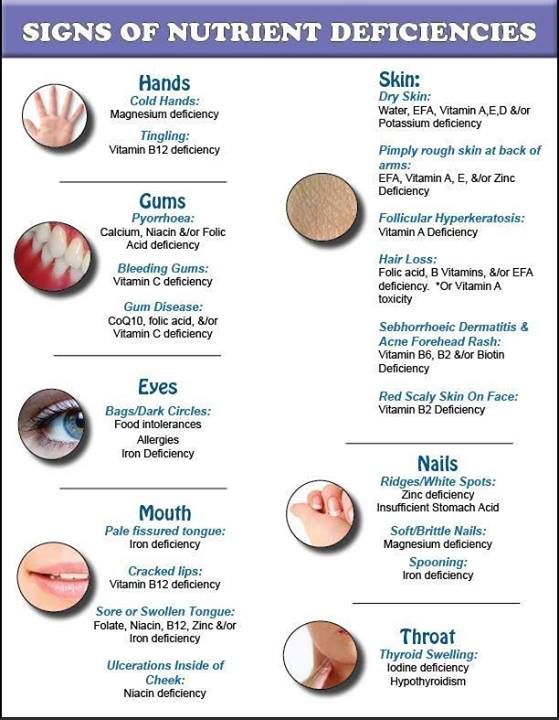Multiple Vitamin Criteria
 Sunday, May 2, 2010 at 12:31AM
Sunday, May 2, 2010 at 12:31AM Guide to Evaluate Multiple Vitamin Formulas
- Science continues to add strength for the recommendations behind this new vitamin criteria. The fact that there are known risks to consuming certain vitamin forms and dosages currently available in the marketplace is no longer in question.

- These risks, regardless of how small, can be significantly mitigated by following proper vitamin protocols.
- Vitamin forms and dosages matter, plus needed synergistic elements add values surpassing individual nutrients.
PRECAUTION: See your medical team if pregnant, ill, undergoing surgery, or if certain genetic traits are present.
Some suggested forms are offered as well. These amounts are based upon absorption percentages, average food vitamin consumption amounts, physiology of vitamins, and benefits balanced against possible adverse effects. The Precautionary Principle comes into play here too. When a dosage range is given.
The lower amounts are actually preferred, but this depends upon other factors. As the diet deviates from ideal, slightly higher range amounts may be needed, especially if digestion becomes compromised. Above these levels, you should be working with a nutritionist or other health professional as you enter into therapeutic nutrient amounts, or to correct genetic misfires. Higher vitamin amounts demand extra body mechanisms to maintain balance and regulate functions. While genetic mutations can be subtle or quite noticeable, many can be overcome or maintained by diet and lifestyle changes.
WHY IS THIS GUIDE NECESSARY?
The reality gap between Science and the multi-vitamin products offered, such as forms, dosages, and synergistic combinations, is increasing rather than getting reduced as one would expect when new vitamin knowledge is discovered. Plus fundamental flaws of nutrition are surfacing without resulting in improved vitamin choices. Example: Vitamin D dosages have exploded upward overwhelming body functions since this is counter to how nature works. Only looking at bone results for vitamin D misses other vital impacted areas, such as arteries, soft tissues, and glands. Vitamin E forms represent another vital aspect needing changes. Important synergistic properties are missing from most multiple vitamins. The one form of Vitamin E out of 8 in nature picked was flawed from the beginning. Scientists recognized that the new synthetic form was different than the natural form and made adjustments they thought would equalize the two. They were wrong.
NOTE: The vast majority of multi-vitamin products in the marketplace today fall short in numerous nutrient forms, dosages, and suffer from the absence of necessary synergistic elements. Methods will be given in another article to reveal procedures to improve upon these formulas with additions and some subtractions. The best approach would be to simply completely build your own multiple vitamin and mineral system. This would involve many different products and Brands. Only a few Brands appear to process the correct knowledge and offer proper nutrient formats and dosages based on the vitamin criteria developed below. Thus, finding a basic formula that works for the majority of people is a compromise or generalization. Just a starting point.
Yes, there are also individual genetic traits that will modify this criteria somewhat, but these will have to be addressed as science updates. Under Medical supervision, some nutrients have mega dose advantages in certain conditions. Supplemented nutrients can go into and out of optimal level amounts quite quickly as you will discover in articles and references presented here. Example for vitamin B1. Notice the 25X RDA amount effect versus the 2500X influence. The nutrient window amounts presented below currently represent the safest and most effective amounts from science.
VITAMIN TAKING PROTOCOLS
- It is a good idea to skip taking multiple vitamins 1 or 2 days a week. REMEMBER, food is your main provider of vitamins. Even water soluble B vitamins can take up to 10 days to clear out of the body.
- Chronic overdosing of vitamin and mineral supplement groups is potentially disruptive of some nutrient pathways and body processes.
- Dietary food supplies 40-90% or more of most nutrients, thus lower amounts of supplements are only necessary to correct and not interfere with normal body functions. Food nutrients and supplement amounts are added TOGETHER to get to USDA vitamin and mineral requirements. The requirements are average guides not daily facts.
REMEMBER: The body developed to exist on swings from high to low nutrient daily intakes with built-in adaptive mechanisms to balance. The body might actually benefit from these natural swings. Calcium intake levels on vitamin D activation is one prime example. article
UPDATE: The dosages need to be updated to new label usage requirements for some nutrients since size (milligrams, etc) is now used rather than units as appears below. This has mainly resulted in consumer confusion rather than clarity. Return soon.
Proper Label Basics
**See Vitamin D Facts article. There may be a need to take increased amounts for short periods, like 3 months of up to 2500 with blood levels monitored. D amounts also depend upon levels supplied by food and sunshine. (if fish oils are present, rancidity factors are possible) ***Do not take vitamin E as D-Alpha Tocopherol at higher than 200 IUs as this may be counter to overall health since at this or higher levels, it begins to limit vital functions by interfering with the absorption of the other vitamin E family members arriving in food. Supplements that mention with "mixed tocopherols" while better than none, usually contain very small amounts and are without much significance. The amount for the other E members needs to be listed. The correct ratios or amount for Gamma Tocopherol is still open. It might be prudent to stay on the lower side of amounts until Scientific research verifies. Include mixed E food sources. Very few Multiple Vitamins have the family of Vitamin E included. A vitamin E family supplement will have to be added separately and is not needed every day, perhaps only 2-3 times a week since it is a fat soluble vitamin with some body storage. ref **** Since folic acid is fortified at about 140 mcg per serving,i.e. in fortified bread, cereals, this pretty much rules out using more than one serving per meal and two per day. Plus, then you would not want to get any in your multiple. Of course, food sources are not counted for this amount and will supply on average 200 mcg. per day. ***** While this amount may seem low, it is due to the fact that calcium is fortified in many foods and one has to add together diet and supplement source amounts. *6 The association of selenium levels with diabetes type 2 risk grows stronger and stronger. It appears benefits have a U shaped curve, adverse at both too low and too high. In USA, soils have plenty of selenium, so little if any supplementation is needed. Adverse effects begin to show up with only 150 mcg.total food and supplements. *7 This is an organic form of vitamin B12. Because it contains a methyl group, one has to be careful that the body does not have a higher load of toxic mercury. (Dental amalgams) since the methyl could change the mercury into a more toxic form. In this case, the cyanocobalamin form is needed or similar forms without methyl group. Also reason dosage is very low. Food forms may be buffered. Vitamin B12 needs to be monitored in certain groups, vegetarians, elderly, and during pregnancy and breastfeeding for anemia. |
||||||||||||||||||||||||||||||||||||||||||||||||||||||||||||||||||||||||||||||||||||||||||||||||||||||||||||||||||||||||||||||||||||||||||||||||||||||||||||||||||||||||||||||||||
|
Continuously searching for more all natural sources. There are some Brands with new Vitamin C sources that say they are all natural, but very difficult to know for sure. The inclusion of the other Vitamin C family members may be more important. EAT MORE FRUITS (2 servings or more) AND VEGETABLES (four servings) NOTE: Very few multi-vitamin formulas have close to these amounts or contain these forms. Why? NOTE: While some vitamins elicit a response quite quickly, the majority of beneficial or adverse effects manifest over time. The body uses its very elaborate checks and balance systems to maintain functions for a long time before becoming overwhelmed and starts to break down. Work with your Nutritionist or Doctor when taking supplements outside of these ranges.
COMPARE THIS CRITERIA TO THE LEVELS tested IN THIS antioxidant ROS STUDY. Very close. This criteria was developed before finding this study. Here is copy of amounts: "A plant-based, multivitamin/mineral and phytonutrient supplement (PMP) and a color-matched placebo were provided by Access Business Group International, LLC (Buena Park, CA, USA). The PMP supplement (12 tablets) contained the following micronutrients: 14 vitamins (700 μg retinol equivalents A, 2.4 mg B1, 2.8 mg B2, 3 mg B6, 4.8 μg B12, 200 mg C, 10 μg D, 22 mg α-tocopherol equivalents E, 55 μg K, 3 mg β-carotene, 60 μg biotin, 500 μg folate, 30 mg niacin, and 10 mg pantothenic acid), and 10 minerals (700 mg calcium, 50 μg chromium, 0.4 mg copper, 75 μg iodine, 6 mg iron, 3 mg manganese, 220 mg magnesium, 25 μg molybdenum, 55 μg selenium and 12 mg zinc)." The tested formula also included these phytonutrients from foods. "The PMP supplement also contained phytonutrients from extracts or powders of acerola, alfalfa, black currant, blueberry, elderberry, grape, grapefruit, kelp, lemon, mandarin orange, marigold, onion, orange, parsley, peppermint, rosemary, spinach, tomato, turmeric, and watercress, and quercetin granular. Most phytonutrients were from botanical extracts..." The food extracts could have been a major player in results: "PMP (a plant based multi-vitamin and mineral with phytonutrients from foods) supplementation for eight weeks reduced ROS and prevented DNA damage without altering endogenous antioxidant system, and several plasma vitamins and phytonutrients were significantly correlated with ROS scavenging and prevention of DNA damage." THE STUDY REVEALED THE PMP FORMULA PROTECTED BLOOD CELLS AGAINST OXIDATION (ROS- REACTIVE OXYGEN SPECIES) and prvented DNA damage to them without distrubing the body's immune system. |
